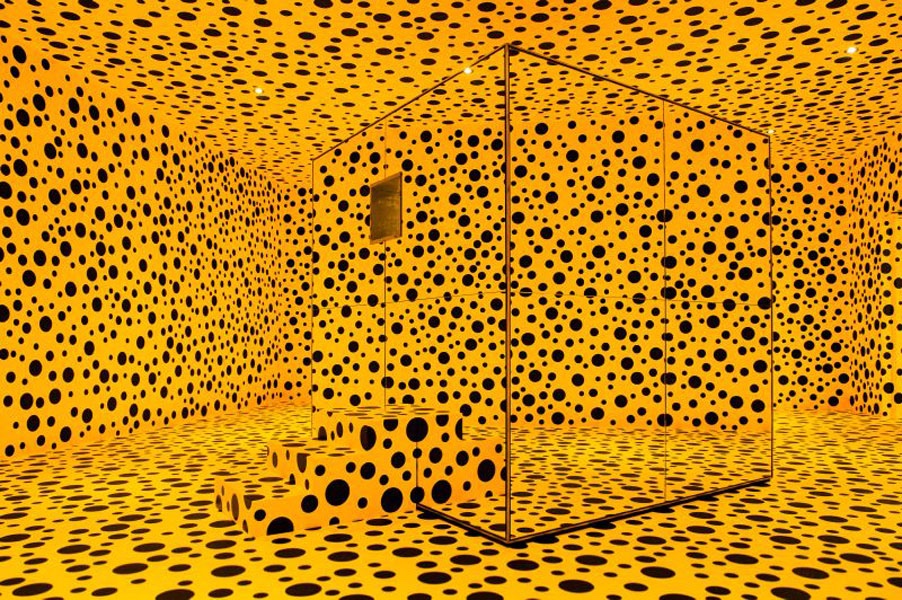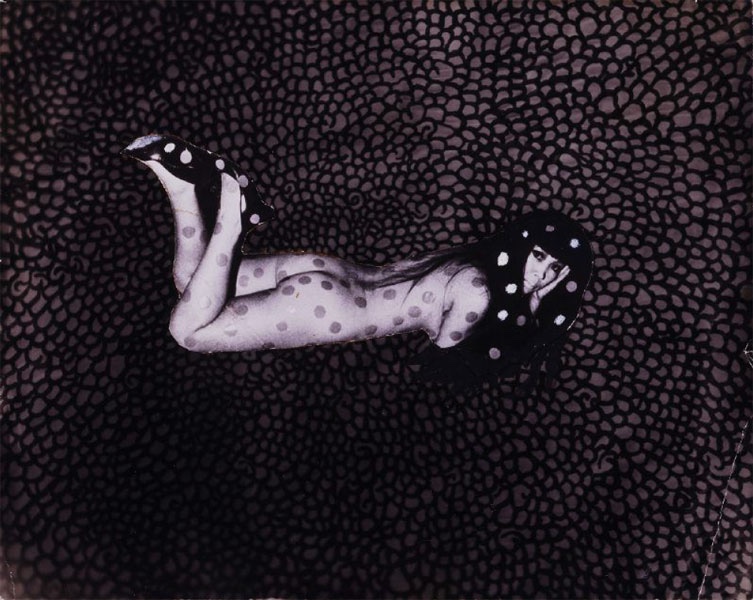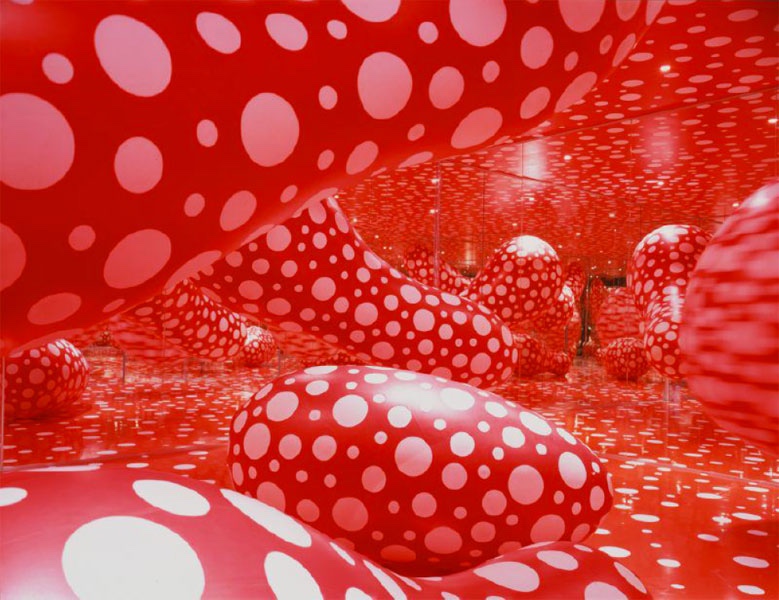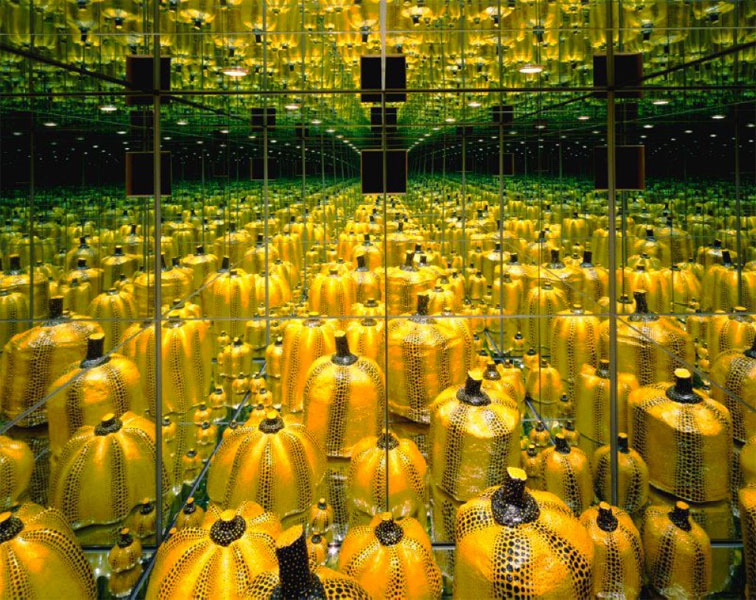The major exhibition at Louisiana Museum of Modern Art this autumn is the first comprehensive retrospective in Scandinavia of works by one of the great individualists of contemporary art, Japanese-born Yayoi Kusama (b. 1929), famous for her artistic universe of radiantly coloured, riotously spreading patterns that cover the surfaces of paintings and sculptures and extend into all-encompassing installations where whole rooms, walls, floors and ceilings are covered in soft forms and dots starkly contrasting in black and yellow or white and red. In the midst of this boundless visual universe stands Kusama herself; a strikingly present artistic persona who is often not only behind the works, but in front of them – in photographs – often dressed in clothes in the same pattern as the paintings, an artistic camouflage strategy that makes her merge visually with her art.
Curated by Marie Laurberg, who has stayed at the artist’s studio in Tokyo for her thorough research in Kusama’s archives and works, the exhibition unfolds the artist’s oeuvre in chronological order. A major theme of the exhibition is Kusama’s enduring fascination with infinity – which in her work is a spiritual idea, a cosmological space and a psychological abyss. This great nothingness exerts an attraction compounded of both desire and fearfulness, as reflected by many of her works.
The exhibition is built up of thematic impacts that focus on moments of radical innovation in Kusama’s work. The first section, Sprouts, is dedicated to the works of her youth – the earliest drawings and sketchbooks with nature subjects, which Kusama created as a self-taught artist in the Japanese provinces. The subsequent galleries focus on the change in Kusama’s work in the late 1950s when she emigrated to the USA and became part of the New York avant-garde scene. Under the theme heading Infinity a number of carefully selected works are shown from the painting series Infinity Nets, which became Kusama’s breakthrough work. In the next gallery, Accumulations, stand soft, eroticised furniture-sculptures covered in hundreds of white, penis-like shapes. Unlike the predominant currents in artistic milieux in New York, where Kusama got to know artists like Andy Warhol and Donald Judd, Kusama’s work was seductive and physical. It was in this period that she developed the fundamental themes around which her life’s work still revolves: fantasies of infinity, dizzying psychological spaces into which one can disappear and the desire to dissolve the ego and be swallowed up by the world. The Priestess of the Polka Dots, unfurls through richly documented material, slide shows and rare, original design objects, the expanded practice into which Kusama progressed throughout the second half of the 1960s. She organised political protests, happenings and body-painting parties – and established her own fashion design firm, Kusama Fashion Institute, all accompanied by a constant flow of press releases that functioned as marketing, artistic manifestos and social satire.
A special feature of this exhibition is the involvement of Kusama’s work with fashion and design. The exhibition shows examples of Kusama’s earliest, unique fashion design from the 1960s, when she created patterned avant-garde garments and costumes with close connections to her performances and happenings. To be seen also are the most recent design collaborations with among others Issey Miyake and Louis Vuitton – in the latter case with a full-scale reproduction of a window decoration created for the fashion house – a design with which Kusama inscribed herself in a wider history of avant-garde artists who through the years have taken an interest in the seductive space of the display window. In addition, Louisiana show major works from the period when she was one of the first artists to develop the installation genre. Particularly worth singling out is the Polka Dot Love Room (1967), which has been radically restored for the Louisiana exhibition and will be shown in its entirety for the first time since the 1960s.
After the showing at Louisiana the exhibition will travel on in the course of 2016 to Henie Onstad Art Centre in Oslo, Moderna Museet/ArkDes in Stockholm and HAM – Helsinki Art Museum.












